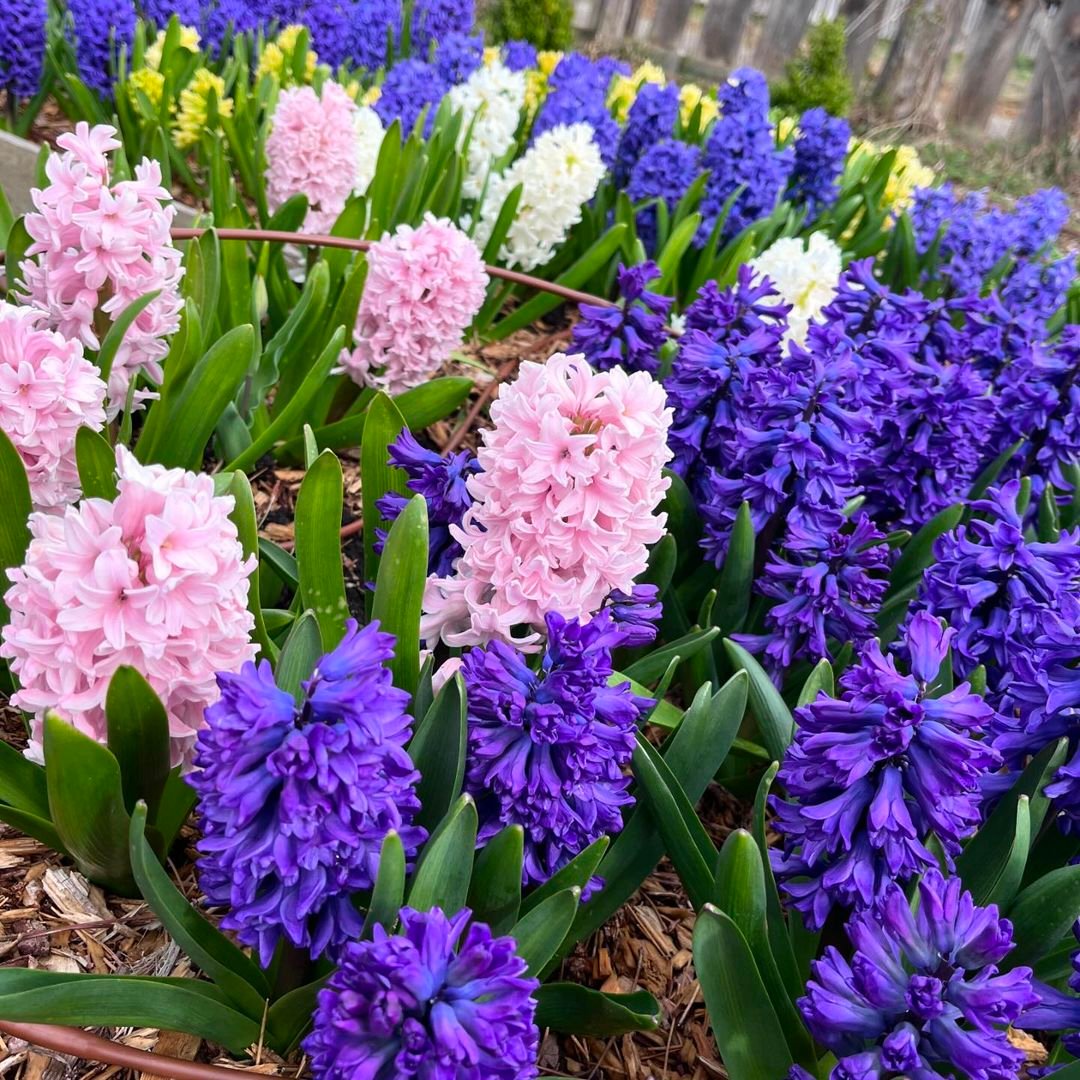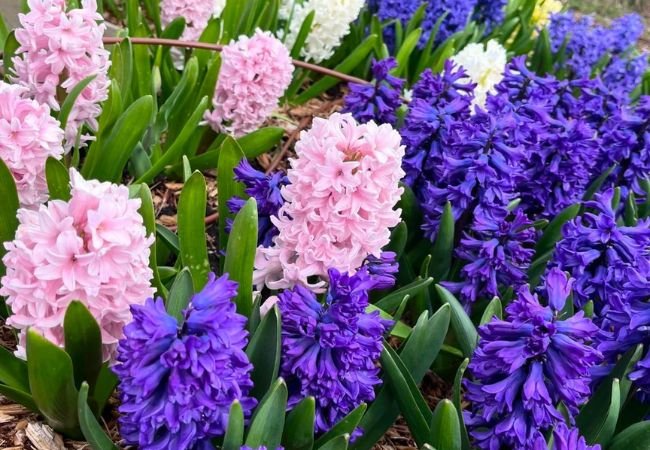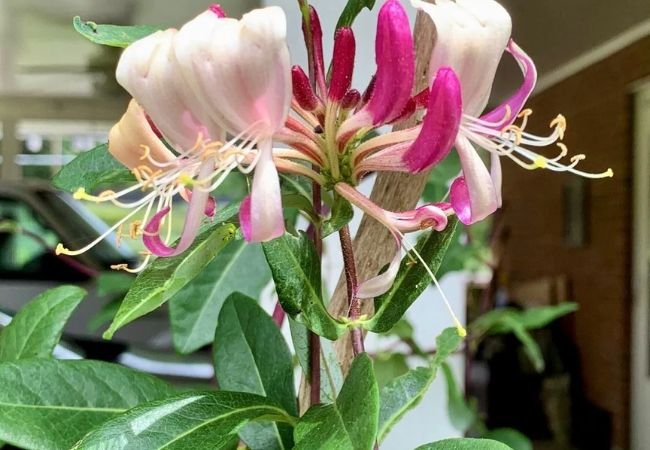Discover the beauty and care of Hyacinth Flowers. Learn how to grow these fragrant spring blooms, their history and tips for enjoying them in your garden or home.
When spring comes, one of the first flowers you might see (and smell!) is the Hyacinth. These pretty, sweet-smelling flowers are a favorite in many USA gardens. Let’s learn more about Hyacinths and how you can grow them.
Certainly! Here’s a chart with information about Hyacinth flowers:
| Aspect | Details |
|---|---|
| Botanical Name | Hyacinthus orientalis |
| Common Name | Hyacinth |
| Plant Type | Bulbous perennial |
| Hardiness Zone | Zones 3-9 |
| Sun Exposure | Full sun to part shade |
| Soil Type | Well-drained, fertile soil |
| Watering Needs | Moderate; avoid waterlogged soil |
| Growth Habit | Upright |
| Height/Spread | 6-12 inches tall / 4-9 inches spread |
| Special Features | Fragrant, dense spikes of colorful flowers (various colors), early spring blooms, attracts pollinators, suitable for garden beds and containers |
What are Hyacinths?

Hyacinths are spring-flowering bulbs that come in many colors. They have clusters of small, star-shaped flowers on a single stem.
Key Features
- Strong, sweet smell
- Colors include pink, blue, purple, white and yellow
- Flowers grow in dense clusters
- Bloom in early to mid-spring
Growing Hyacinths
If you want to grow Hyacinths, here’s what you need to know:
- Planting time: Plant bulbs in fall, about 6-8 weeks before the ground freezes.
- Sunlight: They like full sun or partial shade.
- Soil: They need well-draining soil.
- Depth: Plant bulbs about 4 inches deep and 3 inches apart.
Hyacinths are pretty easy to grow and come back year after year.
Uses of Hyacinths
Hyacinths have several uses:
- Garden beauty: They add color and fragrance to spring gardens.
- Cut flowers: They look and smell great in vases.
- Forcing bulbs: You can grow them indoors for winter blooms.
- Attracting pollinators: Bees and butterflies like Hyacinths.
Interesting Facts About Hyacinths
- Hyacinths have been grown for over 4,000 years!
- In the language of flowers, Hyacinths can mean playfulness or sport.
- The name comes from a Greek myth about a young man named Hyacinthus.
Caring for Your Hyacinths
To keep your Hyacinths healthy:
- Watering: Water well after planting and in dry spells.
- Fertilizing: Add bulb fertilizer when planting and when leaves appear in spring.
- After blooming: Let leaves die back naturally to feed the bulb for next year.
Remember, always wear gloves when handling Hyacinth bulbs, as they can irritate skin.
Indoor Hyacinths
You can enjoy Hyacinths indoors too:
- Choose special forcing bulbs or pre-chilled bulbs.
- Plant in pots with drainage holes.
- Keep in a cool, dark place until shoots appear.
- Move to a sunny spot and enjoy the blooms!
For more info on indoor plants, check out the National Garden Bureau.
Problems and Solutions
Hyacinths are pretty tough, but watch out for:
- Bulb rot: Avoid planting in wet areas.
- Rodents: Some animals might dig up bulbs. Try planting in wire cages.
- Flopping stems: Plant bulbs at the right depth to prevent this.
Hyacinths in History and Culture
Hyacinths have been loved for centuries. They were first grown in the Middle East and brought to Europe in the 16th century. The Dutch became famous for growing Hyacinths and still produce many bulbs today.
The Smithsonian Gardens has more information about the history of garden plants.Hyacinths are beautiful, fragrant flowers that can bring joy to your spring garden. They’re easy to grow, come in many colors, and smell wonderful. Whether you plant them in your garden or grow them indoors, Hyacinths are sure to brighten up your space.
Why not try planting some Hyacinth bulbs this fall? Come spring, you’ll have a sweet-smelling surprise waiting for you!
For more gardening tips and plant care guides, visit usagardenhub.com.






2 Comments on “Hyacinth : Fragrant Spring Beauties for Your Garden”